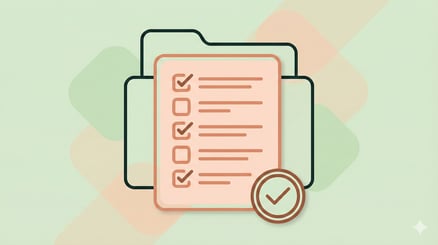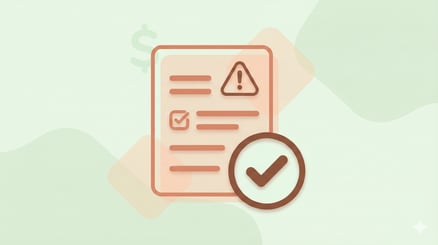&Botox Recovery Process
What to Expect During Botox Recovery?
Botox treatments require almost no downtime. You need to follow some recommendations after having a Botox session.
- Avoid heavy exercises for a few days.
- Avoid washing your face and do make-up for two days.
- Use a high pillow that lifts your head.
- Wait at least a week for your care routines as eyebrow removal or hair coloring.
- Avoid swimming in pools to prevent infection risk. Avoid exposing your face to sunlight, using the sauna and Turkish bath for a week.
What is the Botox Timeline?
The Botox timeline typically involves several stages, including the initial consultation, the day of the injection, the first few days after the injection, and the long-term effects of the treatment.
Injection day: On the day of the injection, the healthcare professional will clean the injection site and use a very fine needle to inject small amounts of Botox into the targeted muscles. The procedure typically takes 10-15 minutes to complete.
First few days: In the first few hours or days after the injection, you may experience some redness, swelling, or bruising at the injection site. You may also feel a slight sensation of tightness or numbness in the treated area. These symptoms usually subside within a few days.
Results: Within 2-7 days after the injection, you should start to notice the effects of the Botox treatment: Your facial muscles will gradually become less active, which will result in a reduction in wrinkles and fine lines.
Maintenance: The effects of Botox typically last between 3-4 months, after which you will need to have follow-up injections to maintain the results.
Injection day: On the day of the injection, the healthcare professional will clean the injection site and use a very fine needle to inject small amounts of Botox into the targeted muscles. The procedure typically takes 10-15 minutes to complete.
First few days: In the first few hours or days after the injection, you may experience some redness, swelling, or bruising at the injection site. You may also feel a slight sensation of tightness or numbness in the treated area. These symptoms usually subside within a few days.
Results: Within 2-7 days after the injection, you should start to notice the effects of the Botox treatment: Your facial muscles will gradually become less active, which will result in a reduction in wrinkles and fine lines.
Maintenance: The effects of Botox typically last between 3-4 months, after which you will need to have follow-up injections to maintain the results.
What are the Tips To Reduce Swelling After Botox?
Botox is a safe procedure in general, however it can cause some swelling in the treatment area, which can be uncomfortable for some people. Here are some tips to reduce swelling after Botox:
Apply ice: It is important to wrap the ice pack in a towel to avoid direct contact with the skin and apply it for no more than 15-20 minutes at a time.
Avoid strenuous exercise: In the first 24 hours after the Botox treatment, strenuous exercises can increase blood flow to the treated area and cause more swelling.
Keep your head elevated: Try to keep your head elevated for the first night after your Botox treatment to reduce swelling. Use pillows to prop up your head while sleeping.
Stay hydrated: Drink plenty of water after your treatment to keep your body hydrated and help reduce swelling.
Avoid alcohol and salty foods: Alcohol and salty foods can cause dehydration, which can make swelling worse. Avoid these for at least 24 hours after your treatment.
Avoid touching the treated area: Avoid touching or rubbing the treated area for at least 24 hours after your Botox treatment. This can help reduce the risk of infection and minimize swelling.
Apply ice: It is important to wrap the ice pack in a towel to avoid direct contact with the skin and apply it for no more than 15-20 minutes at a time.
Avoid strenuous exercise: In the first 24 hours after the Botox treatment, strenuous exercises can increase blood flow to the treated area and cause more swelling.
Keep your head elevated: Try to keep your head elevated for the first night after your Botox treatment to reduce swelling. Use pillows to prop up your head while sleeping.
Stay hydrated: Drink plenty of water after your treatment to keep your body hydrated and help reduce swelling.
Avoid alcohol and salty foods: Alcohol and salty foods can cause dehydration, which can make swelling worse. Avoid these for at least 24 hours after your treatment.
Avoid touching the treated area: Avoid touching or rubbing the treated area for at least 24 hours after your Botox treatment. This can help reduce the risk of infection and minimize swelling.
How Frequently Should Botox Injections be Administered?
Typically, the effects of Botox persist for around three to four months. Initially, the forehead tends to revert to its natural state, followed by the fading of crow's feet, and finally, the effects diminish in the glabella region.
While it's not mandatory to undergo another session immediately as the effects gradually fade, optimal benefits are often attained through periodic maintenance treatments, approximately every four months.
While it's not mandatory to undergo another session immediately as the effects gradually fade, optimal benefits are often attained through periodic maintenance treatments, approximately every four months.
What to Expect During Botox Recovery?
Botox treatments require almost no downtime. You need to follow some recommendations after having a Botox session.
- Avoid heavy exercises for a few days.
- Avoid washing your face and do make-up for two days.
- Use a high pillow that lifts your head.
- Wait at least a week for your care routines as eyebrow removal or hair coloring.
- Avoid swimming in pools to prevent infection risk. Avoid exposing your face to sunlight, using the sauna and Turkish bath for a week.
What is the Botox Timeline?
The Botox timeline typically involves several stages, including the initial consultation, the day of the injection, the first few days after the injection, and the long-term effects of the treatment.
Injection day: On the day of the injection, the healthcare professional will clean the injection site and use a very fine needle to inject small amounts of Botox into the targeted muscles. The procedure typically takes 10-15 minutes to complete.
First few days: In the first few hours or days after the injection, you may experience some redness, swelling, or bruising at the injection site. You may also feel a slight sensation of tightness or numbness in the treated area. These symptoms usually subside within a few days.
Results: Within 2-7 days after the injection, you should start to notice the effects of the Botox treatment: Your facial muscles will gradually become less active, which will result in a reduction in wrinkles and fine lines.
Maintenance: The effects of Botox typically last between 3-4 months, after which you will need to have follow-up injections to maintain the results.
Injection day: On the day of the injection, the healthcare professional will clean the injection site and use a very fine needle to inject small amounts of Botox into the targeted muscles. The procedure typically takes 10-15 minutes to complete.
First few days: In the first few hours or days after the injection, you may experience some redness, swelling, or bruising at the injection site. You may also feel a slight sensation of tightness or numbness in the treated area. These symptoms usually subside within a few days.
Results: Within 2-7 days after the injection, you should start to notice the effects of the Botox treatment: Your facial muscles will gradually become less active, which will result in a reduction in wrinkles and fine lines.
Maintenance: The effects of Botox typically last between 3-4 months, after which you will need to have follow-up injections to maintain the results.
What are the Tips To Reduce Swelling After Botox?
Botox is a safe procedure in general, however it can cause some swelling in the treatment area, which can be uncomfortable for some people. Here are some tips to reduce swelling after Botox:
Apply ice: It is important to wrap the ice pack in a towel to avoid direct contact with the skin and apply it for no more than 15-20 minutes at a time.
Avoid strenuous exercise: In the first 24 hours after the Botox treatment, strenuous exercises can increase blood flow to the treated area and cause more swelling.
Keep your head elevated: Try to keep your head elevated for the first night after your Botox treatment to reduce swelling. Use pillows to prop up your head while sleeping.
Stay hydrated: Drink plenty of water after your treatment to keep your body hydrated and help reduce swelling.
Avoid alcohol and salty foods: Alcohol and salty foods can cause dehydration, which can make swelling worse. Avoid these for at least 24 hours after your treatment.
Avoid touching the treated area: Avoid touching or rubbing the treated area for at least 24 hours after your Botox treatment. This can help reduce the risk of infection and minimize swelling.
Apply ice: It is important to wrap the ice pack in a towel to avoid direct contact with the skin and apply it for no more than 15-20 minutes at a time.
Avoid strenuous exercise: In the first 24 hours after the Botox treatment, strenuous exercises can increase blood flow to the treated area and cause more swelling.
Keep your head elevated: Try to keep your head elevated for the first night after your Botox treatment to reduce swelling. Use pillows to prop up your head while sleeping.
Stay hydrated: Drink plenty of water after your treatment to keep your body hydrated and help reduce swelling.
Avoid alcohol and salty foods: Alcohol and salty foods can cause dehydration, which can make swelling worse. Avoid these for at least 24 hours after your treatment.
Avoid touching the treated area: Avoid touching or rubbing the treated area for at least 24 hours after your Botox treatment. This can help reduce the risk of infection and minimize swelling.
How Frequently Should Botox Injections be Administered?
Typically, the effects of Botox persist for around three to four months. Initially, the forehead tends to revert to its natural state, followed by the fading of crow's feet, and finally, the effects diminish in the glabella region.
While it's not mandatory to undergo another session immediately as the effects gradually fade, optimal benefits are often attained through periodic maintenance treatments, approximately every four months.
While it's not mandatory to undergo another session immediately as the effects gradually fade, optimal benefits are often attained through periodic maintenance treatments, approximately every four months.
Related Treatments
.webp?width=200&height=200&name=thread-lift%20(1).webp)
Thread Lift

Neck Lift

Blepharoplasty (Eyelid Surgery)

Buccal Fat Removal (Bichectomy)
.webp?width=200&height=200&name=thread-lift%20(1).webp)
Thread Lift

Neck Lift

Blepharoplasty (Eyelid Surgery)







